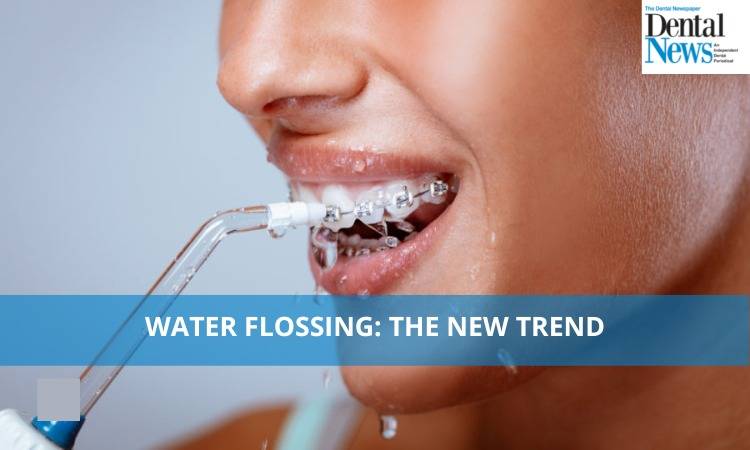
Water flossing is a trend that took the social media by storm. A stream of water used to clean the teeth came as a culture shock. While nothing is more flattering than shiny clean teeth. Not every trend can keep up with the hygiene practices. Let's take a look at what water flossing is and how it works.
How does water floss work?
While brushing twice a day is an excellent way to practice oral hygiene, not every part of the dentition can be cleaned with the brush. The interdental spaces or the contact areas are more prone to caries and plaque due to the inability of the brush to clean from these areas. The floss is handy as it helps remove the debris and food particles from interdental spaces. While manual flossing requires back and forth motions, water floss generates a steady stream of water with pressure. The handheld device removes the food and plaque stuck between the teeth.
Here's why you should consider water flossing
Traditional floss can be discomforting for those suffering from poor periodontal conditions. It can also lead to bleeding, and harsh and improper use of floss can also result in these problems. The pulsatile motion generated by water floss can help cleanse the teeth gently. While water flossing can sometimes cause sensitivity, the following tends to disappear over time. Waterfloss can be used before or after traditional flossing to enhance cleaning.
Water flossing is a good option for patients with compromised motor skills, including patients with Parkinsons', Carpel tunnel syndrome and arthritis. Since it doesn't require special skills, it can be easily adapted by such patients. Water flossing can also work efficiently for patients who have crowns and bridges. Patients with dry mouth can also benefit from waterjet because it can keep the oral cavity moist.
Pros And Cons Of Water Floss
Water floss, also known as water pik or waterjet, comes with various advantages and disadvantages. Before trying to get your hands on one, it's best to consult your dentist and analyse the anatomy of your teeth.
Pros of Water Flossing
● Easy to use as it doesn't require a technique
● Can clean between the spaces in teeth
● Can access hard-to-reach areas
Cons of Water Flossing
● It May does not work efficiently if the water pressure is not enough
● It can be messy since water can splatter
● It is not cost efficient
Is Water Flossing As Good As Dental Floss?
Water floss works on the principle of hydrokinetics. According to the research, the water flow is directed in such a way that it can effectively remove plaque and debris while cleaning the gumline. While water floss might help with bleeding gums, according to dentists, traditional floss is still the best practice. The old fashion thread can scrape the sides and gaps between the teeth. However, if you find using thread floss difficult, water floss can be a suitable option.

Dr Rida Qamar
The author is contributing writer at Dental News Pakistan and can be reached at Ridaqamar100@gmail.com

